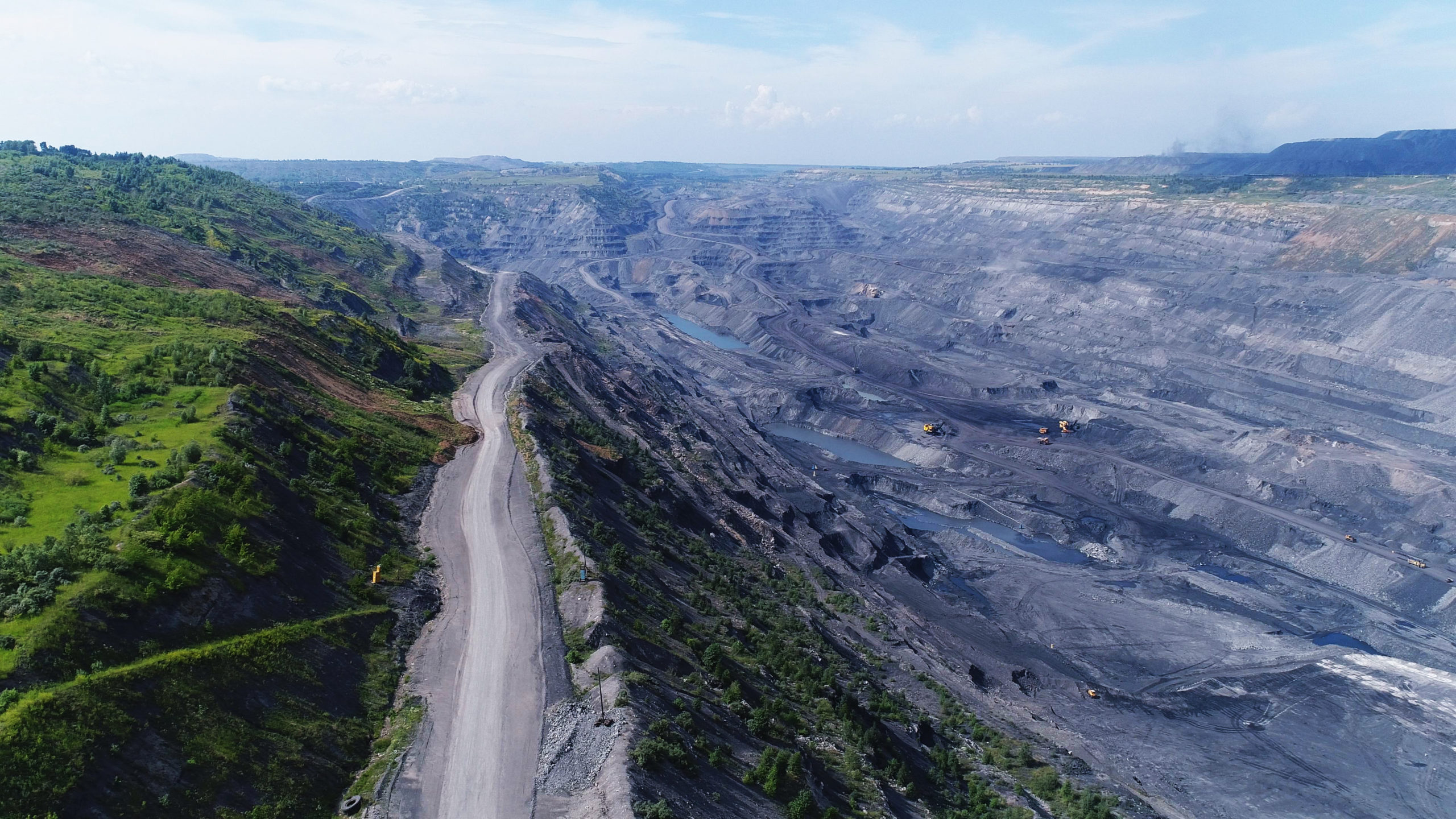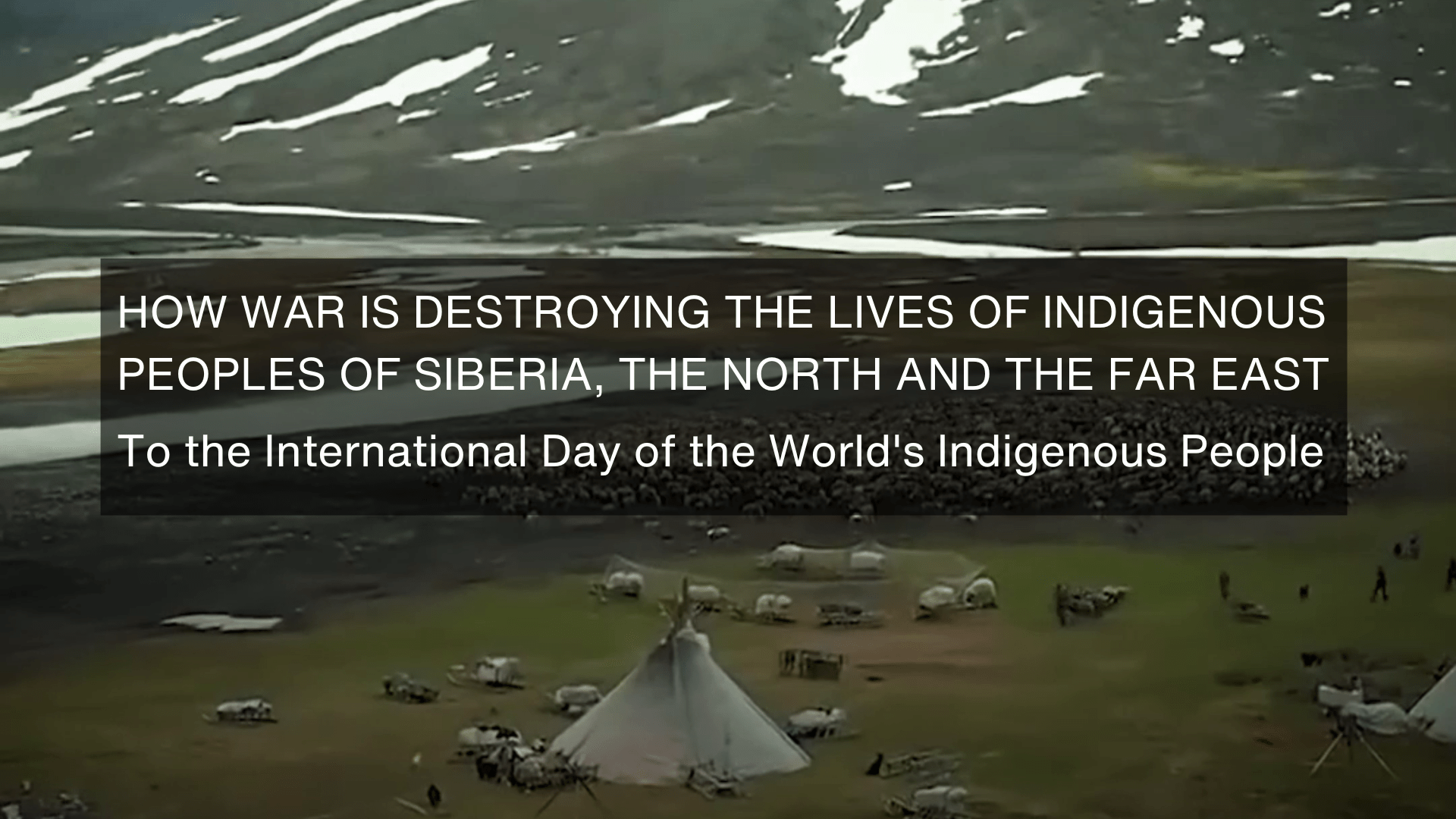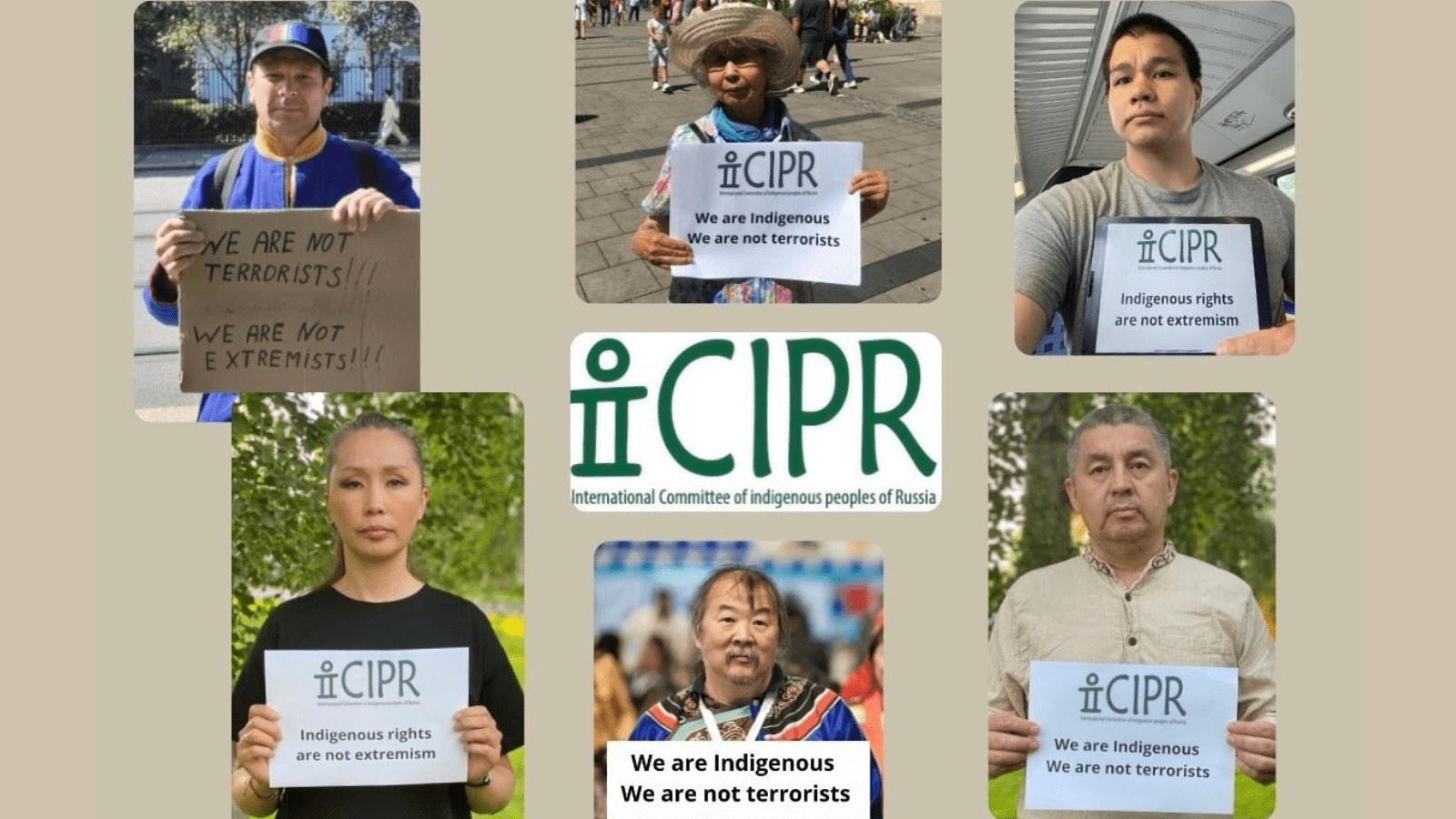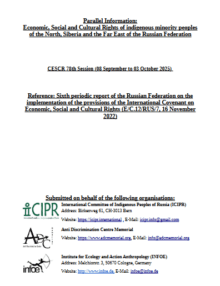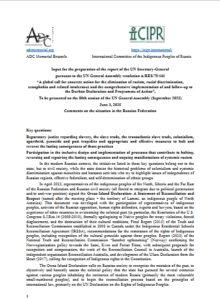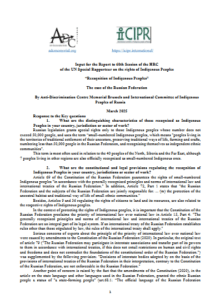The Khakas, Shor, and Teleut peoples are indigenous residents of southern Siberia. The lands on which they live and practice traditional types of farming are rich with coal, which means that their territories have been rapidly developed by coal companies over the last decade. Here coal is mined using the surface method, that is, the cheapest and dirtiest method. Indigenous communities have to grapple with the illegal confiscation of their lands. They suffer from systematic environmental pollution and the irreparable harm caused to their habitats. In addition, their cultural and religious objects are being destroyed and activists and defenders of indigenous rights are being persecuted.
The coal industry is one of the most questionable industries in Russia’s fuel and energy complex in terms of profitability and one of the most dangerous in terms of adverse impact on the environment and human health. Even though many countries have recently turned away from coal in favor of alternative energy sources, leading to a decline in demand for and value of this type of fuel, the Russian government still believes that coal has a future and is taking strategic measures to heighten production. According to environmentalists, Russia is already producing more coal than it can use or export – approximately 400 million tons a year, putting it in sixth place among world leaders in coal mining; if the Development Program for the Coal Industry through 2035 is to be believed, this volume will increase by a factor of 1.5 over the next 15 years.

While the benefits of coal to the Russian economy are unclear, the harm caused by the operations of most Russian coal companies is obvious. Coal mines and pits pollute the atmosphere and bodies of water, poison and forever destroy the soil’s genetic profile, and are a source of tremendous amounts of hazardous waste and industrial refuse. The coal dust, soot, and suspended particles that enter the atmosphere during the mining and transport of coal can cause oncological and other illnesses of the heart and the respiratory tract and have caused the premature deaths of hundreds of people. Official statistics confirm that air, water, and soil pollution and morbidity and death rates are much higher in places where coal is mined than in areas that are far-removed from coal operations. In most cases, however, the authorities and regulatory bodies prefer not to speak about this openly.
A significant percentage of Russia’s coal resources are concentrated in the Republic of Khakassia and Kemerovo Oblast. The enormous Beysky Coal Deposit, which includes seven open pits, is located in Khakassia. Of these, four – Arshanovksy, Vostochno-Beysky, Kirbinsky, and Mayrykhsky – operate on Koybalskaya Steppe – a place of traditional residence for the Khakas people. Kemerovo Oblast contains the Kuznetsk Basin, part of whose territory is located on Shor and Teleut lands. For many members of these peoples, their native lands serve not just as a place to live and practice their traditional economic and cultural activities, but also form the foundation of their identity and well-being. Nevertheless, the state plan to increase coal mining encourages local governments to give away as much territory as possible for exploitation, sometimes without even giving a thought to the value that this land has held for centuries for the people living on it.
In Khakassia, coal companies, acting with the full support of the authorities, are pushing for permits to conduct industrial activities and seizing agricultural land to build industrial sites. Indigenous peoples first encountered violation of the right to ownership and the right to land in 2013, when two large coal companies – Mayrykhsky Mine and Arshanovsky Mine – started exploiting coal on Koybalskaya Steppe in spite of the lack of permits and protests on the part of the local population. As a result, regulatory agencies opened criminal cases on illegal coal mining and violation of environmental laws against the management of Mayrykhsky and Arshanovsky mines, but these mines continued their work after paying small fines.
In 2018, Mayrykhsky Mine obtained a subsoil development license to a new plot, Beysky-Zapadny, where Arshanovsky Mine was already operating, but indigenous farms and irrigation canals supplying water to the lakes of Koybalskaya Steppe were already located there. For farmers, these lands represent their main means of earning of living – grazing and haymaking.
From October 2018 to March 2019, coal company representatives organized public hearings, as required by law, to clear the construction of new pits with the local population. Counting on the legal illiteracy of local residents, the coal companies did not prepare any project documentation or information about the environmental impact of coal mining. But residents voted almost unanimously against the construction.
In spite of this, the coal companies were able to obtain permits to start construction by falsifying votes with the support of the republic’s leaders and in violation of the laws and regulations for holding public hearings. At the third hearing, inaccurate data was entered into the agenda and the conclusion according to which the majority of residents voted for the new pit, while in actuality most residents did not participate in the vote and those that did voted against the new mine. On the basis of this conclusion, amendments were made to the locality’s general plan and representatives of Mayrykhsky and Arshanovsky mines filed a petition with the government of the Republic of Khakassia to transfer 17 privately-owned land plots from agricultural use to industrial use; this petition was later granted.
Thus, by falsifying the results of the public hearings, neither the coal company nor the regional authorities obtained the de facto consent of the local population to build the pit, and Mayrykhsky Mine did not have the right to start work on the seized territories. Later, The Subsoil Use Department for the Central Siberian District published 14 orders concerning the seizure of over 50 land plots from 44 owners in favor of the coal mines.
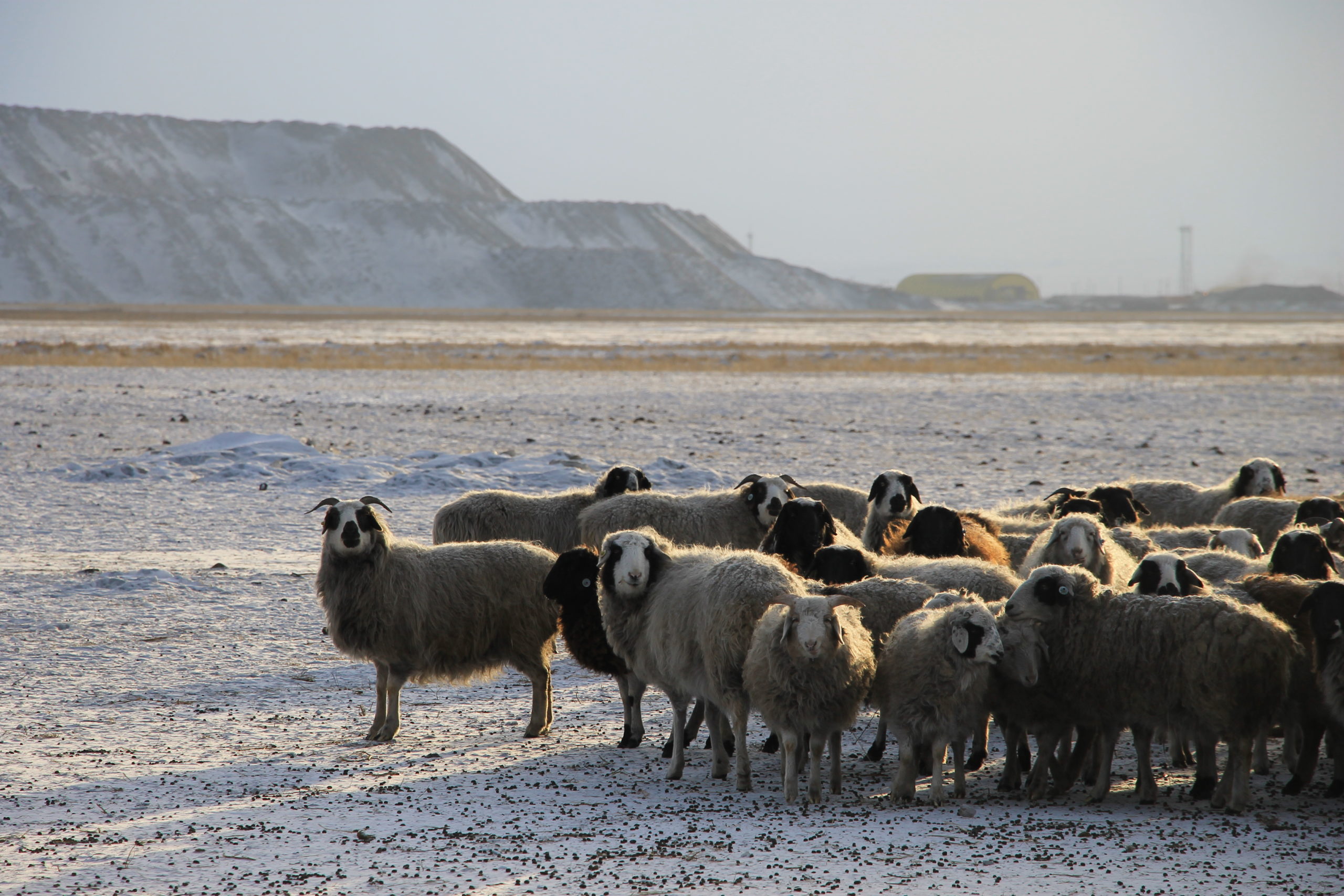
Some farmers who did not want to reconcile themselves to the arbitrary will of the coal companies and the government attempted to appeal these orders in the republic’s courts, but most of the courts refused to uphold the claims. However, in the fall of 2019, activists from the regional environmental organization Rodnaya Step filed a claim with the Supreme Court of the Republic of Khakassia regarding the resolution of the Government of Khakassia to transfer 17 land plots located in Beysky District from the category of lands designated for agricultural use to the category of lands designated for industrial use. This claim was rejected on November 11, 2019. Rodnaya Step activists filed an appeal with the Fifth Appeals Court of General Jurisdiction, which cancelled the Supreme Court’s decision on March 12, 2020 and found the Government of Khakassia’s resolutions invalid. The court noted that both mines had committed multiple violations of land laws and regulations for appealing to government bodies when filing their petitions.
Despite this ruling, the coal companies continue to illegally conduct subsurface work on the plots, and local residents say that the Subsoil Use Department for Central Siberian District is preparing new orders concerning the seizure of privately-owned land for coal companies.
The southern districts of Kemerovo Oblast, which borders Khakassia, are home to close-knit communities of Shors and Teleuts, small Turkic-speaking indigenous peoples. Over the course of centuries, they have hunted, fished, gathered mushrooms and berries on the taiga, and maintained vegetable gardens. Their way of life changed dramatically after coal was found on their lands. Coal mining has caused irreparable harm to nature: The rivers have become shallower and fish have disappeared from them, while wild animals have left the taiga. In recent times, coal companies have started to receive permits to exploit coal near villages.
In order to legalize and protect places of traditional activities and traditional residence of indigenous peoples from the barbaric exploitation of mineral resources, members of indigenous peoples have been appealing to the leaders of Kemerovo Oblast on a regular basis since 2001 to form a territory of traditional nature use in the region. However, not one territory of this type has been created in Kemerovo Oblast to this day.
The absence of any territorial or administrative autonomy for the Shors or Teleuts was reflected in the adoption of decisions in favor of the coal companies. After winning a tender to develop the Uregolsky coal deposit, which is located on the territory of the Orlov rural settlement in the middle of traditional Shor lands, Kiyzassky Mine started preparing for construction in 2011. Public hearings on this project were held in the rural settlement’s administrative center, which is located several kilometers from the industrial site. Four local residents were present at the hearings; they all voted in favor of the project. On the basis of the minutes of these public hearings, the administration adopted Resolution No. 18 “On the Consent of Residents of the Municipal Formation Orlov Rural Settlement to the Design and Construction of Kiyzassky Mine Sites on the Settlement’s Territory” of December 24, 2012.
In order to adhere to the formal procedure for public hearings, in 2013 the company held a series of consultations in the Shor village of Chuvashka, during which the majority of residents spoke out categorically against this project’s realization. Residents collected signatures and sent an appeal to the RF president and to the 7th Assembly of Small Indigenous Peoples of the North, Siberia, and the Far East, and Chuvashka residents held daily one-person pickets near the city administration building over the course of five months. This had no effect whatsoever on the authorities’ decision: Kiyzassky Mine was brought online in November 2014 and began mining coal, causing irreparable harm to the environment.
Coal mining caused the destruction of the Shor village Kazas, where Beregovoy Mine, which is owned by the Yuzhnaya Coal Company, has been mining coal since 2012. A condition of the license issued by the Federal Agency for Subsoil Use for the development of the Beregovoy mine was the relocation of the residents of 28 homes. Without consulting or notifying village residents, the Myski mayor signed a relocation agreement with Yuzhnaya, which started to force residents to sell their homes and land plots, offering a price 10 times below their actual value. If residents refused, oil company staff threatened to set fire to their homes and raze them with bulldozers. These threats were realized: Between November 2013 and March 2014, the homes of people who did not agree with the sale were burned down by unidentified people. Criminal cases on the arson were opened, but the guilty parties were never found.
Violation of the rights of indigenous peoples to a healthy environment
The mining of coal has a colossal impact on the environment and human health. The systematic failure to comply with sanitary norms and rules regulating coal company activities is having a grave effect on the life and health of the population living near the mines. The mortality rate from cancer in Khakassia grew by 10.3 percent over five years and 14.2 percent over ten tears, with cancer of the lungs, trachea, and bronchial tubes ranked highest for the region. According to the Ministry of Health, in 2017 Khakassia ranked third among Russian regions for one-year mortality rate from cancerous diseases. Kemerovo Oblast has seen even harsher consequences from coal company operations. The environmental situation there is one of the worst in Russia.
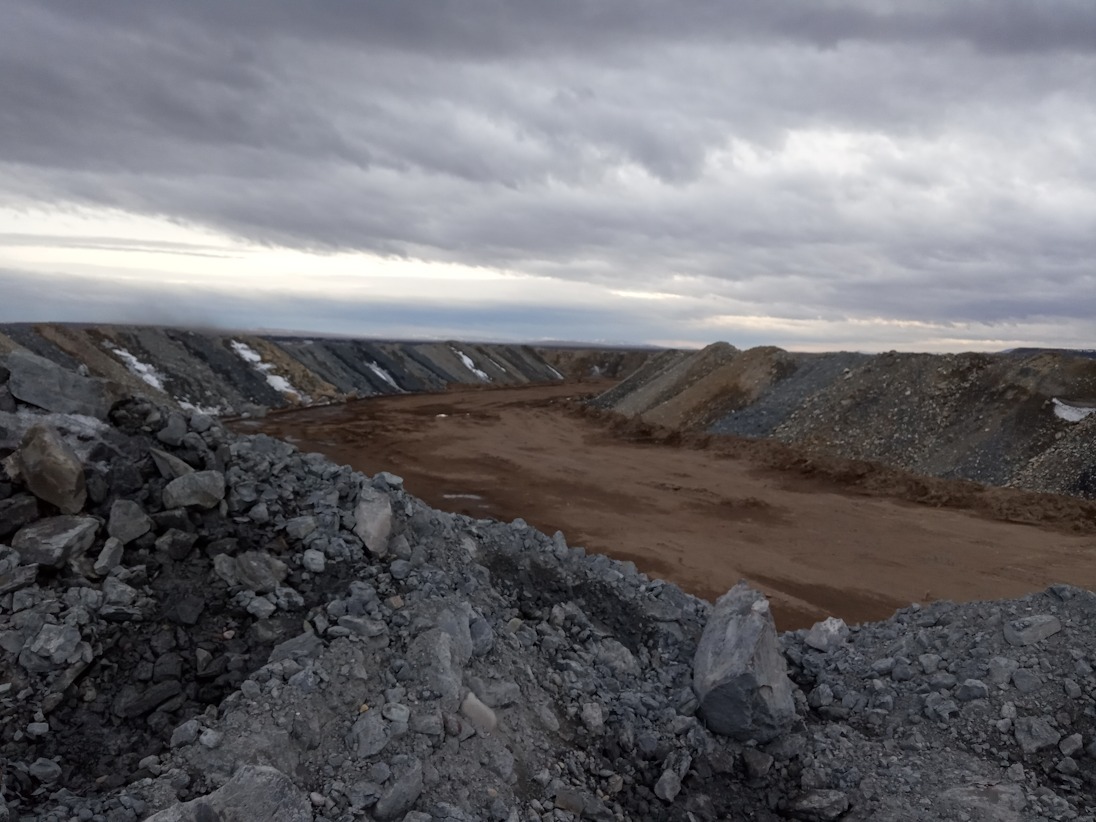
Indigenous peoples are particularly vulnerable to pollution and environmental destruction: They live in direct proximity to coal companies, and all aspects of their lives are inextricably connected with ecosystems and territories of traditional residence and nature use. Nevertheless, coal companies are most interested in the lands of the Khakas, Shor, and Teleut peoples because on many of their plots coal is located at a depth of less than 30 centimeters from the earth’s surface, which means that it can be mined using a surface technique that employs pits, which are quarries under the open sky. This method is believed to be more productive and cheaper than shaft mining, but it is also the most harmful in terms of health conditions and environmental impact. Coal operations have an irreversible negative impact on traditional indigenous places of residence since they destroy its shallow fertile layer and fragile ecosystem forever.
Pollution of the environment with coal dust and industrial waste
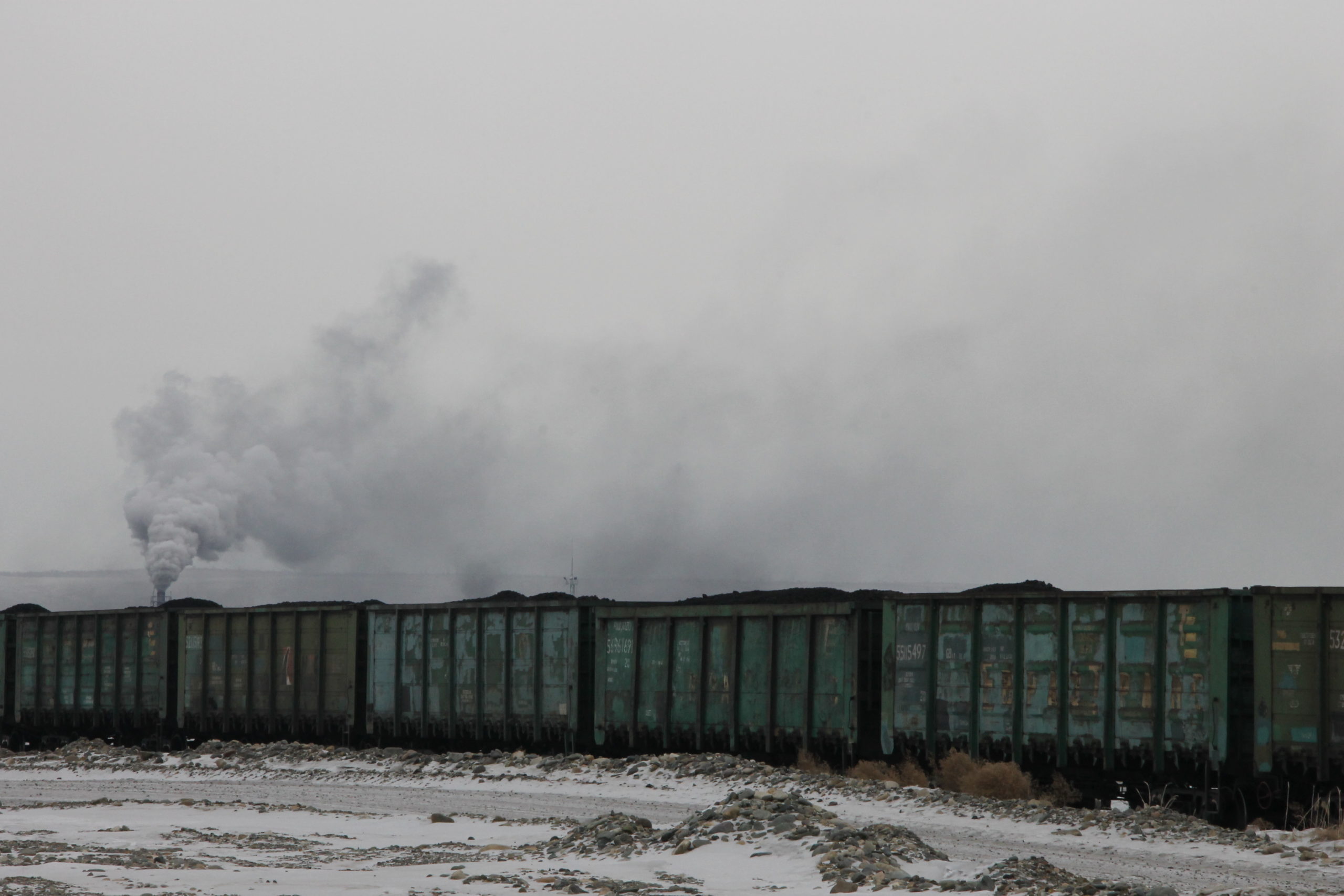
Unlike mines, pits spew a tremendous amount of dust into the air during the mining and transportation of coal, and also during its processing at coal preparation plants. This dust contains coal particles, unburned explosives, and mine dust that is toxic for animals and people and causes a whole range of oncological illnesses and other respiratory illnesses. During an explosion, about 500 tons of dust rises to a height of 1,500 meters; this dust disseminates within four to six hours within a radius of dozens of kilometers from the pit, falls on soil and vegetation consumed by animals, and pollutes water bodies.
In addition, the exploitation of coal leads to the formation of waste piles of overburden – artificial embankments consisting of coal production waste and the waste rock that covers coal deposits and is removed during open pit mining. The waste piles, like the pits themselves, are an active source of industrial dust and have forever destroyed the thin, fertile layer of Siberian soil. In Khakassia, many lands previously used for grazing, haymaking, and crop growing are becoming unsuitable for human life and activities. Waste piles surround many villages in both Khakassia and Kemerovo Oblast.
The industrial roads used to transport coal are also a major source of dust. For example, in 2012 Arshanovsky Mine built an industrial road for transporting coal along the territory of the Khakas village of Shalginov, right next to the homes and plots of local residents, even though all the rules state that industrial roads should be located outside of residential areas. Village residents get no rest from the never-ending rumble of trucks and feel short of breath from the dust, while the fruits and vegetables they plant in their gardens are poisoned by the coal dust that falls onto the soil and into the water.
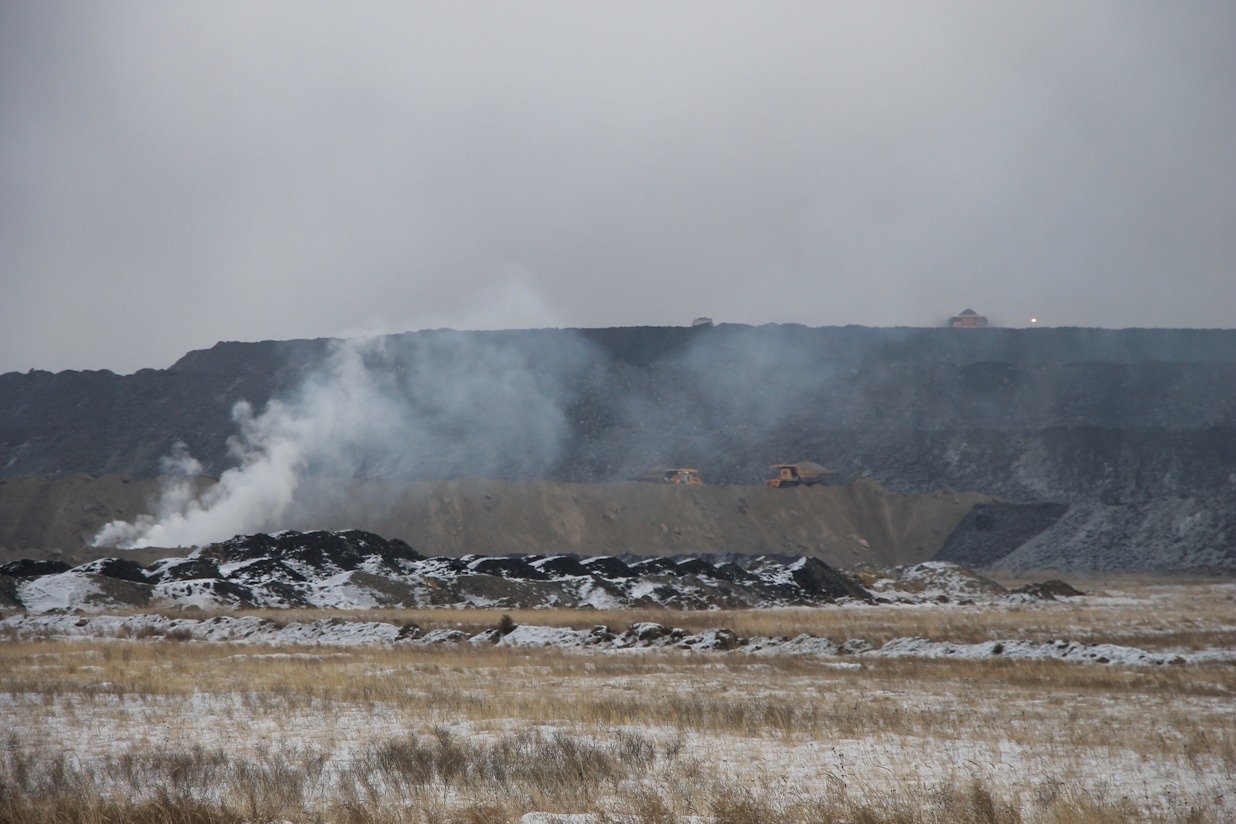
The source of a tremendous amount of coal dust has been the “coal dragons,” which is what local residents call the dry coal separators used at the pits. Mayrykhsky Mine’s illegal commissioning of the Chinese-made FGX-48A separators in early 2019 caused the emission of a colossal amount of black coal dust containing phenol and other toxic substances. This dust settles on the land and nearby lakes and also falls on the territories of the Khakas villages of Arshanovo and Shalginov, which are located two kilometers from the separating plant. According to local residents, as soon as the separators start operating black soot fills the air and covers everything around, making it difficult to breathe. In the winter of 2020, the Federal Service for Supervision of Natural Resource Usage found that the mine had never received a comprehensive environmental permit for operating the separators. Violations were also noted in the operation of dust separators and the cleaning and drainage systems, and air pollution standards were significantly exceeded. In addition, information provided by the mine indicated that the separators were commissioned on January 27, 2020, when they actually started being used in early 2019.
According to official data from the Southern Siberian Interregional Department of the Federal Service for Supervision of Natural Resource Usage, in 2019 a total of 1.8 million tons of pollutants were released into the atmosphere of Kemerovo Oblast, which represents a jump of 13.1 percent over 2018. The bulk of emissions were released by coal production and processing companies. An egregious example of this is Kiyzassky Mine, which started shipping product in March 2014, but did not commission treatment facilities until 2018. Another example is a coal loading station located in the village of Borodino, where Shors and others live. This station has been operating for several years, but it has never been officially commissioned and does not have the sanitary protection zone stipulated by law. The environmental situation did not improve even after dust suppression equipment was installed at the station. In 2019, Borodino residents ordered an independent expert assessment of the snow, which they paid for themselves; the assessment found that the amount of suspended materials in the snow exceeded the norms thousands of times over.
Pollution of water, rivers, and reservoirs
Every year, hundreds of thousands of cubic meters of tainted effluent from coal pits is discharged into rivers and lakes that have traditionally been economically important to the indigenous peoples of Khakassia and Kemerovo Oblast. Environmentalists from Khakassia say that neither Mayrykhsky nor Arshanovsky mines, which mine for coal on Koybalskaya Steppe, have taken any water purification measures. As a result of numerous violations of environmental protection laws, a considerable volume of waste water containing remnants of explosive materials, petroleum products, heavy metals, and other hazardous alloys are discharged into drainage areas and water bodies without being treated, which causes sedimentation, salinization, and acidification, poisons flora and fauna in the water, and almost completely excludes future use of the water from these bodies for household or agricultural purposes. Local residents say that the water pumped from the pits is not treated and is not purified and is discharged directly into the Abakan River, which has not had any fish since 2019. On December 20, 2019, all of the fish in Lake Turpanye were poisoned and died.
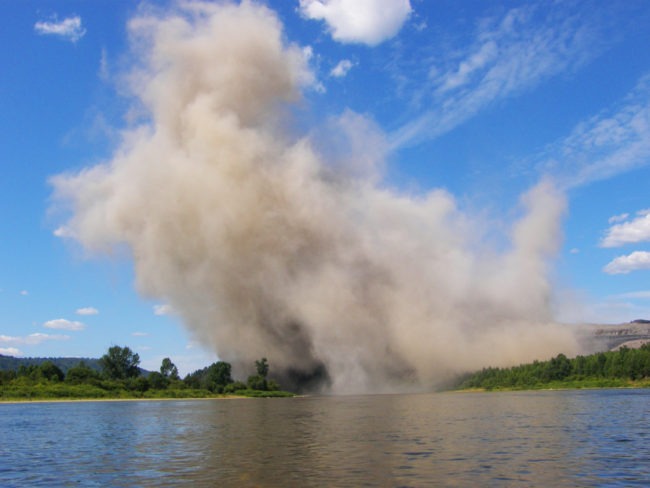
Explosion on the bank of the Mrass River. Photo: Vyacheslav Krechetov 
Water from the Bolshoy Kiyzas River. Photo: Vyacheslav Krechetov
The pollution of water bodies is a problem residents of Kemerovo Oblast have also experienced firsthand.The Kazas and Mrassu rivers, which flow through Shor villages and are formed from sources in the mountains, were pristine before the coal industry arrived. The Kazasik River used to be the main source of drinking water and a place for fishing. The fish started to disappear after the Mezhdurechensky and Krasnogorsky pits opened, and the water became unsuitable for drinking. Lake Tayezhnoye was turned into a sludge pit by the coal mine. In 2018, Shor activists and environmentalists announced that over 10 bodies of water on traditional Shor territories were completely ruined or severely polluted over the five years of Kiyzayssky Mine’s operations and that some of these bodies of water were spawning grounds for red list species.
Violation of the right to self-determination and cultural development
Mining operations in both Khakassia and Kemerovo Oblast have resulted in the destruction of natural objects and burial grounds and religious and cultural sites that today’s population of these territories believes to be a part of its cultural heritage.
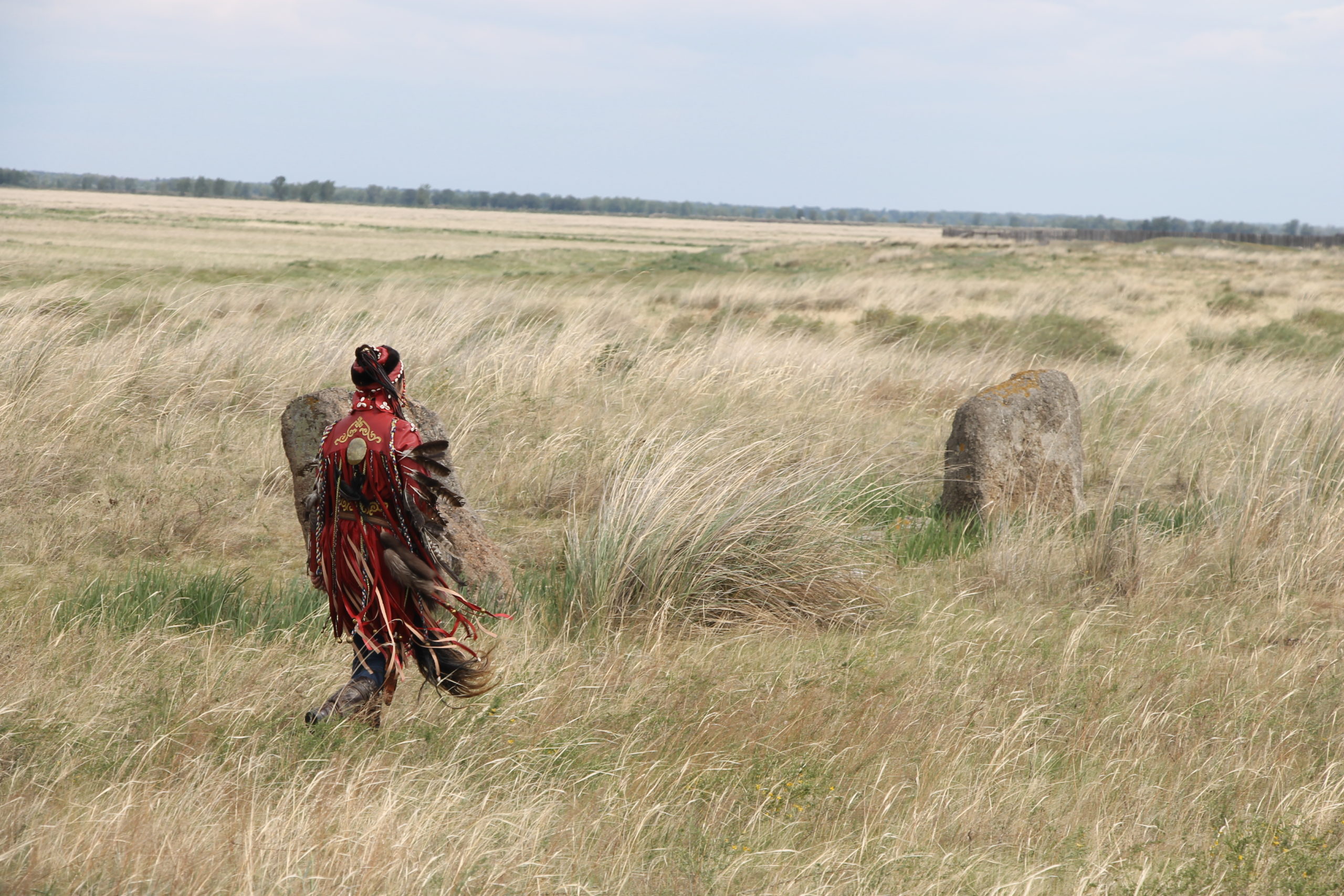
The law “On Cultural Heritage Objects (Historical and Cultural Monuments) of the Peoples of the Russian Federation” establishes the state’s obligation and responsibility to preserve and develop cultural and ethnic identity, protect, restore and preserve cultural-historical living environments, and protect and preserve sources of information about the origins and development of indigenous cultures in the Russian Federation. This law, however, does not provide concrete mechanisms to protect indigenous cultural and religious objects, so state and coal business interests often prevail in matters concerning the preservation of the cultural and historical values of a given people.
Right now, over 150 cultural heritage objects and hundreds of natural monuments and objects of worship are located in the business zones of the large coal mining companies operating on Koybalskaya Steppe. The majority of these – 122 – are located on licensed plots of Mayrykhsky Mine. Many of them are currently facing the threat of destruction. For example, the ancient burial mound Kotozhekovsky chaatas, a burial ground from the VI-VII centuries, is located on a plot that was transferred to Mayrykhsky Mine for exploitation. In the spring of 2020, Mayrykhsky Mine used a coal waste pile to block access to the ancient ancestral burial ground from the late 2nd millennium BCE to the early 1st millennium BCE known as the Kotozhekov-5 burial site, which is a place of worship for indigenous peoples. These archaeological monuments may disappear in the near future, since, under Russian law, archaeological digs must be conducted at the location of such a monument when the monument prevents mining; then the monument is completely removed from the land and transferred to museum collections.
In March 2020, Mayrykhsky mine blocked a road leading to an active cemetery of the aul Khyzyl-Salda and Lake Turpanye with a mound of crushed rock and earth. Local activists assumed that this was an attempt to impede independent observations of a dry coal separator that was operating without any permits. Environmentalists and local residents took photographs and video recordings at short range of black clouds of coal dust, which later served as evidence of illegal activity on the part of the mine.
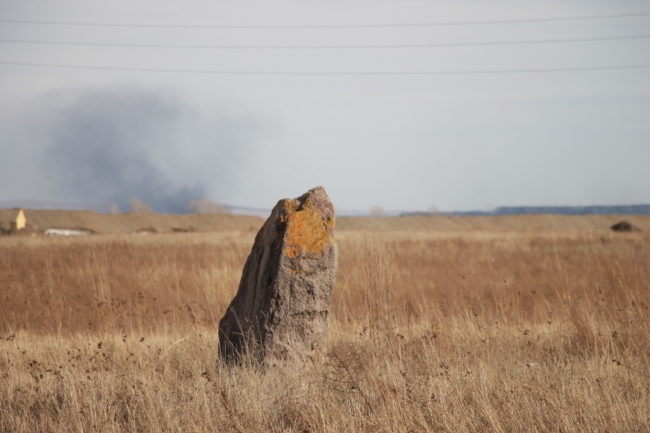
In 2012, a coal company in Kemerovo Oblast blew up Karagay-Lyash, the sacred mountain of the Shor people where they held rituals in the belief that the spirit of the mountain would protect the nearby Shor village. A cemetery is located in the Shor village of Kazas, which was razed by the coal companies in 2013–2014, and the Shors do not have free access to the graves of their loved ones because a checkpoint and security were installed at the entry to the former village. The situation has not changed in spite of numerous complaints to Russian and international bodies.
The destruction of traditional places of residence and farming has forced members of indigenous communities to give up farming, leave their land, and move to the city. Unlike the Shors and Khakas, the Teleuts have almost completely lost their native environment because of coal activities. The villages of Bekovo, Shanda, Razrez 14km and rural areas of the Teleuts are in a state of environmental catastrophe and the question of their survival is more relevant than ever.
Persecution of activists and defenders of indigenous rights
The few members of indigenous communities who speak out against illegal coal mining and the activists and environmentalists who support them are subjected to pressure and persecution by the government, coal companies and associated criminal structures, the police, and other security agencies. They use various methods of pressure, including criminal prosecution, attempts to discredit the activities of certain activists in the media, anonymous threats online, and other methods.

Yana Tannagasheva. Kazas. Photo: Nelli Tokmagasheva 
Protest in Cheremza against the construction of a coal loading complex. Photo: Vyacheslav Krechetov
In 2016, Yana and Vladislav Tanagashev, Shor activists from Kemerovo Oblast, reported on events in Kazas through UN mechanisms. They started receiving threats from the police and the FSB immediately after this. In 2017, after Yana and Vladislav traveled to Geneva, the threats only intensified and police started following their children. Yana, Vladislav, and their children were forced to flee Russia and request asylum in an EU country in 2018.
In Khakassia, indigenous activists, environmentalists, and independent journalists face persecution for participating in demonstrations, covering the illegal activities of coal mines, and even for merely supporting the victims of the coal industry.
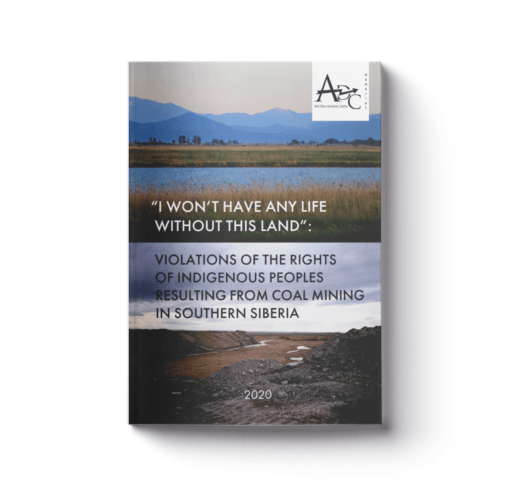
Read more about the violation of the rights of indigenous peoples of southern Siberia in the report.









 Feedback
Feedback 